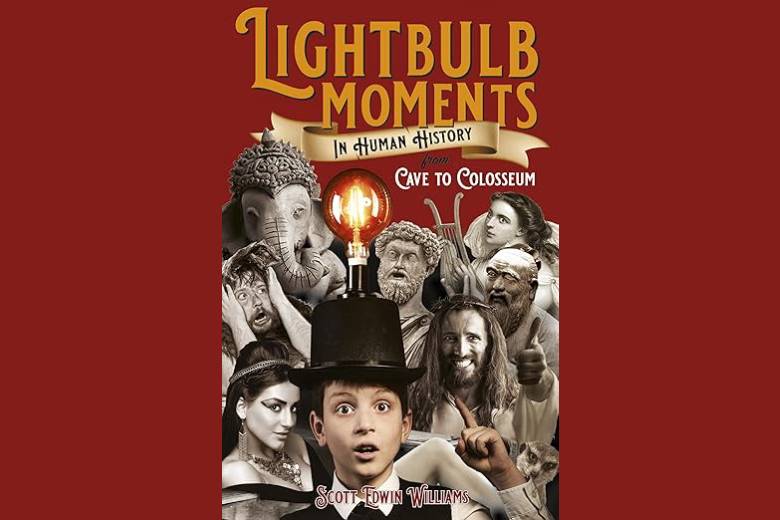The key to making history relatable, interactive, and enjoyable is blending entertainment with education, inspiring a deeper appreciation for the past, and encouraging more people to explore its fascinating stories and lessons.
Scott Edwin Williams, a teacher in Sydney, Australia, wrote Lightbulb Moments in Human History: From Cave to Colosseum so that young people could learn more about the past in a fun and slightly unhinged manner. And he succeeds with some aplomb, producing a work that tracks humanity’s big ideas and the eccentricities of those who conceived them.
As Scott points out, most lightbulb moments are elaborations on existing ideas. One such example is writing, which started life in Mesopotamia around 3400 BCE as a practical method of doing business and evolved into a powerful method of storytelling. Before writing, humans communicated using spoken language, gestures, drawings, and symbols. Early forms of communication were limited in terms of preserving information over time and sharing it with others.
Learn more about the past in a fun and slightly unhinged manner
Many of the lightbulb moments in this book are, for the most part, irreverent and fun, such as what on Earth inspired the Mayans to have tobacco enemas? Scott also looks at the movement of homo sapiens out of Africa, the first use of tools, the birth of cities, Stonehenge, the Great Wall of China, and the Colosseum in Rome, to name but a few of the areas explored. He works chronologically through time from Prehistory to Ancient Greece and Rome, incorporating many witty comments and funny images along the way.
Let’s face it, history, aside from being enlightening, can be just plain weird at times. In the town of Strasbourg, France, in 1518, for instance, a strange phenomenon occurred where people started dancing uncontrollably in the streets. This dancing plague lasted for weeks, with some participants even dying from exhaustion.
This is just one of the countless strange historical facts that remind us that history is filled with unexpected events, oddities, and quirky stories that offer insights into the diverse and colourful nature of human experiences. And this book highlights quite a few of those – well worth a read!






